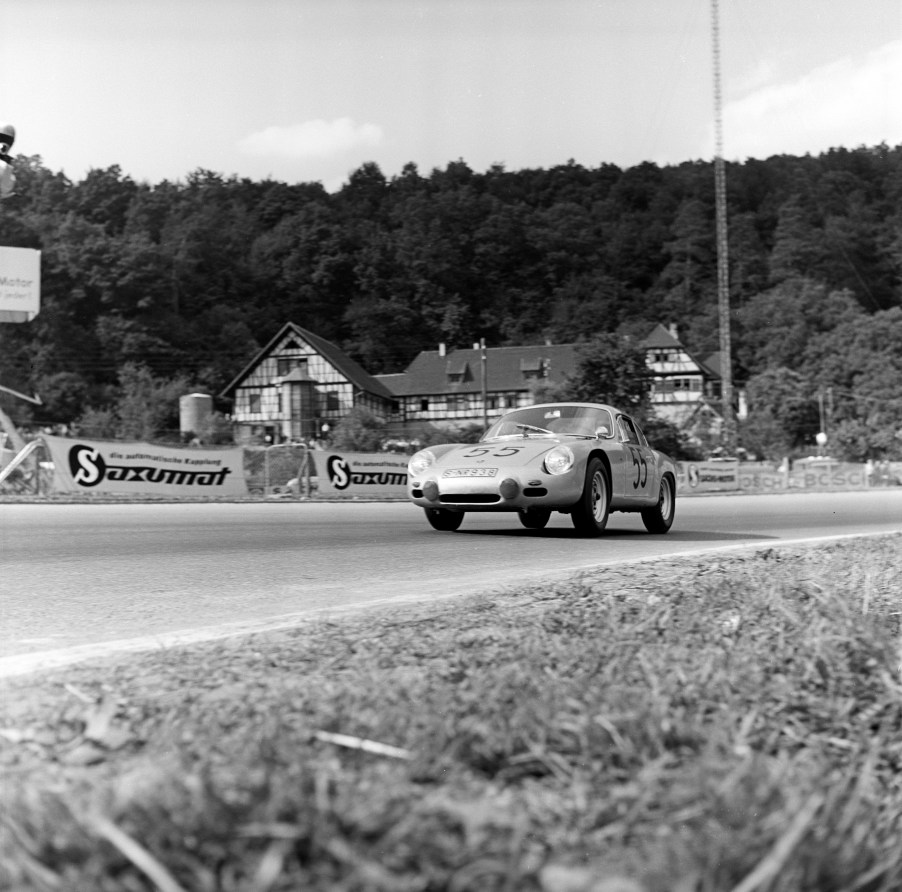
The Fiat 500 Wasn’t the Only Car Abarth Tuned
Mercedes has AMG, BMW has M, and Fiat has Abarth. In the US, that name usually conjures up images of sporty Fiat 500 hatches. But the tuning firm has been in business for over 70 years at this point. And during that time, it’s improved more than just the 500’s performance.
Abarth’s early history

The Fiat 500 isn’t even the only modern Fiat Abarth model. There’s also the Fiat 124 Abarth Spider, which is based on the current-gen Miata. And there are a number of non-US Abarth models. But Fiat’s and Abarth’s relationship didn’t happen overnight.

Vienna-born Carlo Abarth originally started with motorcycles, Sports Car Digest reports. By the time he was in his mid-20s, he was a 5-time European champion, using his own home-built bikes. He even beat the Orient Express in an 850-mile 1933 race, Hagerty reports. But after a near-fatal 1939 accident, he switched to cars, working closely with other racers and automakers, like Porsche.
After WWII, he re-established his friendship with the Porsche family and helped found Italian carmaker Cistalia with Ferry Porsche and several other engineers. Then in 1949, Carlo and racer Guido Scagliarini left Cistalia to properly establish the Abarth company.
Initially, the company focused on making tuning kits and performance exhausts. Alfa Romeo, Maserati, and even Ferrari all used these exhausts, Abarthisti reports. But, with the release of the 1955 Fiat 600, Abarth’s focus expanded.
The classic Fiats
The 600 was the base of the 1956 Fiat Abarth 750 GT Zagato, Classic Driver explains. The coupe was built on the 600’s chassis, but had a larger rear-mounted 750cc four-cylinder engine, tuned to 48 hp, Petrolicious reports. The original made 23 hp. A race-prepped Bertone version, Women on Wheels reports, set a new record during the 1956 24 Hours of Monza. But Abarth wasn’t finished with Fiat, or the 600.
The Abarth-tuned Fiat 600 went through a number of evolutions. Its engine was up-sized to 767cc, then 847cc, then 982cc, Revs Institute reports. By 1970, the 1345-lb Fiat Abarth 1000 TCR Radiale made 112 hp. Oh, and to improve engine performance and aerodynamics, the engine lid was bolted open.
But even in the 50s and 60s, the Abarth-tuned Fiat 500s were arguably the biggest stars. One example was fitted with a special aerodynamic body and set 23 international speed records in 1958.
Then in 1963 came the Fiat 595 Abarth. Its 594cc two-cylinder made 27 hp; the original made 13. The later SS trim boosted that to 35 hp. And, like Abarth’s other models, the added power was matched by larger brakes, upgraded suspension, and larger wheels.

Abarth was also involved in Fiat’s rallying efforts. First with the original 124 Spider, then with the Fiat 131 Abarth Rally. Based on the 2-door model, the rally-spec 131 had aluminum doors and plastic fenders and hood. The Stradale models, Dirt Fish reports, went even further, with all but the roof being made of fiberglass.
Its 2.0-liter mechanically fuel-injected four-cylinder produced 225 hp at first, then 245. It had fully-independent rear suspension, unlike the standard model, Bring a Trailer reports. And the racing versions also came with a limited-slip differential. It was a fairly-successful car, winning 3 WRC titles.
Autobianchi A112
Abarth worked closely with Fiat over the decades until the automaker acquired it in 1971. 4 years earlier, Fiat had also acquired another company, Autobianchi, Classic Driver reports. In 1969, Autobianchi released the front-wheel-drive A112, a competitor to the Mini Cooper, Petrolicious reports. And just like John Cooper tuned the Mini, Abarth also tuned the A112.
The 1971-1985 Autobianchi A112 Abarth came with a larger four-cylinder engine, more carburetors, stronger brakes, and multiple upgraded engine components. It also had sport seats, a tachometer, and an aluminum steering wheel. There were 2 models available: the original 982cc version with 58 hp; and in 1975 came the 1050cc version, with 70 hp. By 1973, the hot hatch also gained an oil cooler and offered a heated rear window and alloy wheels as options.
It was never a factory-supported rally car, but the Autobianchi A112 was nevertheless a popular choice for aspiring rally drivers. There was even a spec racing series formed around it. And it still competes in vintage rally events.
The Porsche 356 Abarth
Before being acquired by Fiat, Abarth worked with a number of other European automakers. One was the French company Simca. But even after Carlo left Cistalia, he still maintained contact with Ferry Porsche. And in 1960, Porsche and Abarth collaborated again to create the Porsche 356 Carrera GTL, Revs Institute reports.

The 356 received a new aluminum body, which was roughly 100 lbs lighter than the original one. It was also narrower and shorter. The 356 Carrera GTL Abarth also rode about 5” lower than the standard car, Classic Driver reports. About 20 were made in 1960-1963, costing the modern equivalent of $53,700.
Despite some early overheating issues necessitating additional engine vents, the Porsche 356 Carrera GTL was a fairly successful race car. It won its class 3 years in a row at Le Mans and took 6th overall at the 1961 Targa de Florio.
Perhaps it’s time Fiat, Abarth, and Porsche work together again, then.
Follow more updates from MotorBiscuit on our Facebook page.


